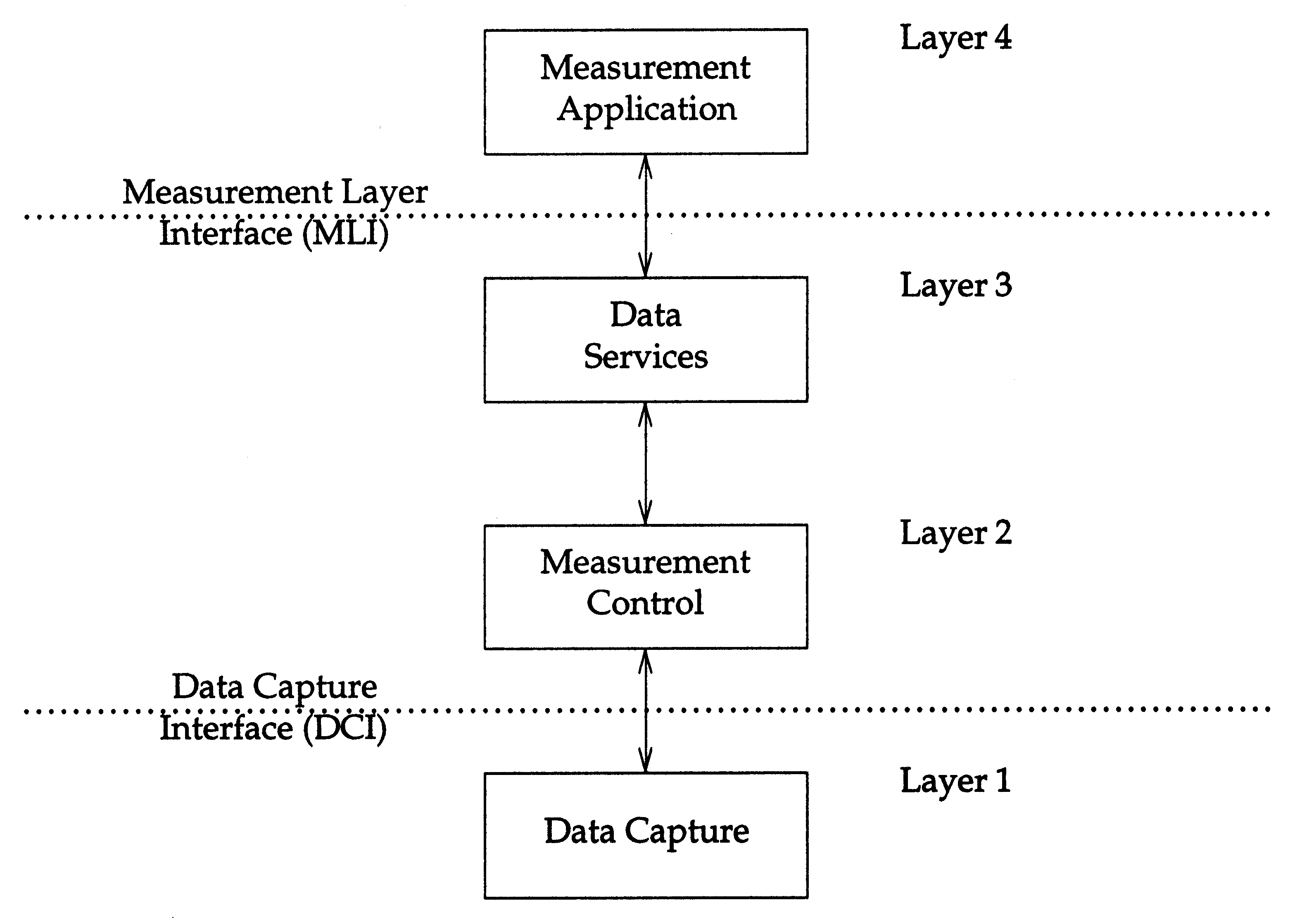Previous section.
UMA Measurement Layer Interface (MLI)
Copyright © 1997 The Open Group
UMA Reference Model
The UMA reference model defines four layers and two interfaces, as shown in
UMA Layers and Interfaces
.

Figure: UMA Layers and Interfaces
Functional Layers
In order, from
data capture to application program, the functional layers are:
-
the Data Capture Layer (DCL), which collects the raw data
-
the Measurement Control Layer (MCL), which manages the data collection
-
the Data Services Layer (DSL), which distributes data to archive, to networked
(that is, distributed) components, to files, and directly to MAPs, and which
handles measurement requests, data transformation, and filtering
-
the Measurement Application Layer (MAL), which consists of the various MAPs
requesting data collection and providing service capabilities for technical
support of management goals.
Interfaces
UMA establishes two programmatic interfaces which concern data
provider developers and measurement applications:
-
a Data Capture Interface (DCI) to request data through
collection orders to UMA-compatible data providers. The DCI lies between
the DCL and the MCL, and is used to register, provide, and acquire data.
(See reference DCI).
-
a Measurement Layer Interface (MLI), an application programming interface
for measurement applications
to communicate with the UMA facility. The MLI lies between the DSL and the
MAL, and is used by MAPs to specify collection and reporting attributes.
- Note:
- The interface between the DSL and the MCL is not formally
specified. These two layers, though functionally distinct, may be
combined in some implementations.
Components and Interfaces of UMA
illustrates the two programmatic interfaces
(DCI and MLI) in relation to the functionality of UMA components.

Figure: Components and Interfaces of UMA
UMA Characteristics
The three layers, DCL, MCL, and DSL, and the two interfaces, DCI
and MLI, comprise the basic UMA facility. When this document describes UMA or refers
to UMA characteristics, it is describing the combined capabilities of these
layers and interfaces.
The MLI isolates a MAP from the implementation
details of the rest of UMA. Interactions between a MAP and UMA are
carried out through
the MLI.
The UMA reference model provides several advantages over the older
data collection and display programs such as sar. The
structure of the DCL,
and the DCI, permits the extension of
data collection to new devices or services
without affecting existing programs.
Additionally, the architecture of the DCL allows the data from multiple
providers
to be collected by a single layer and this in turn improves the
synchronisation
of the collected data. For example, since the data reported by
sar and various
other statistical commands use different data collection routines,
there is an unpredictable time delay between datapoints collected by
one program
and datapoints collected by the other. With UMA, the collection is
more closely synchronised.
By having UMA manage the collection and distribution of data, multiple
application
programs can use the same collected data. This results in savings of
memory, disk space,
and system overhead. The MLI and the DSL allow
transparent communication across networks,
therefore a MAP running on one system can manage and display data from another
system across the network.
Why not acquire a nicely bound hard copy?
Click here to return to the publication details or order a copy
of this publication.


